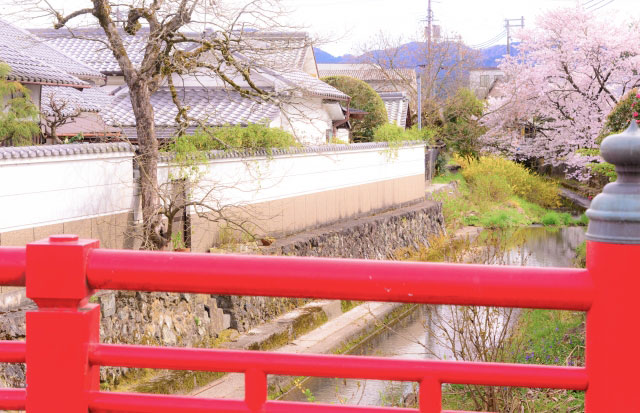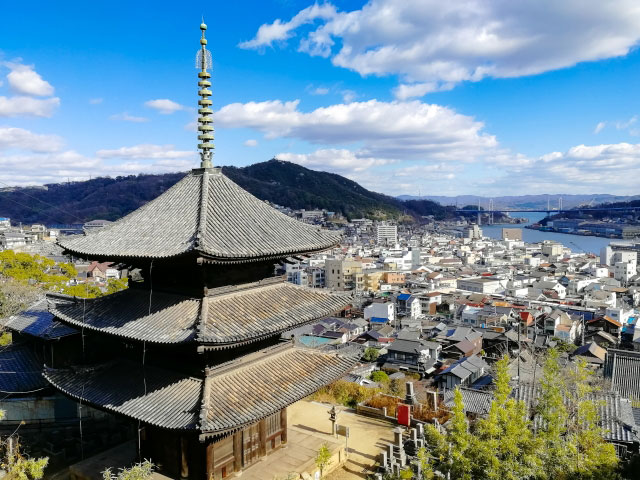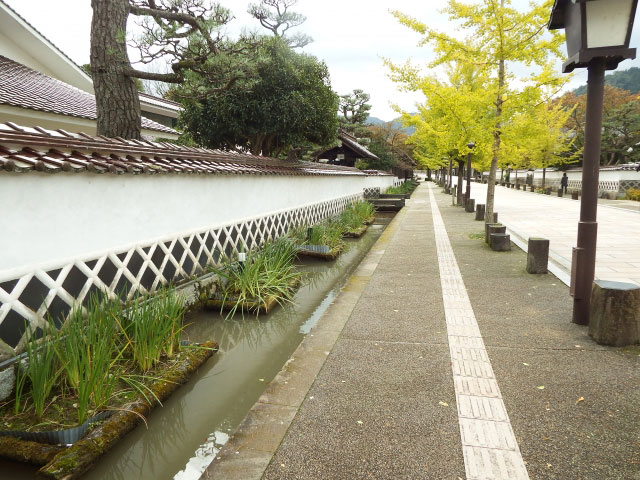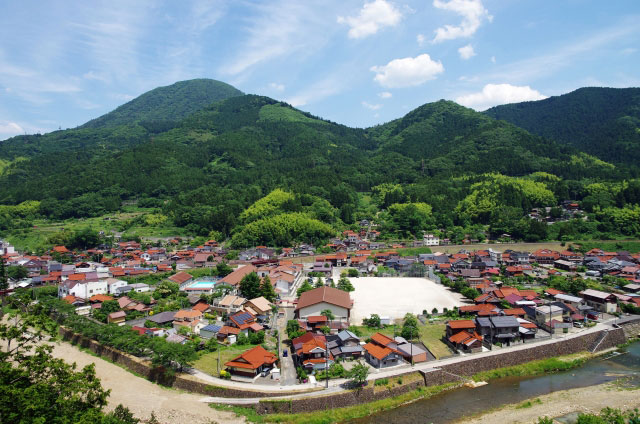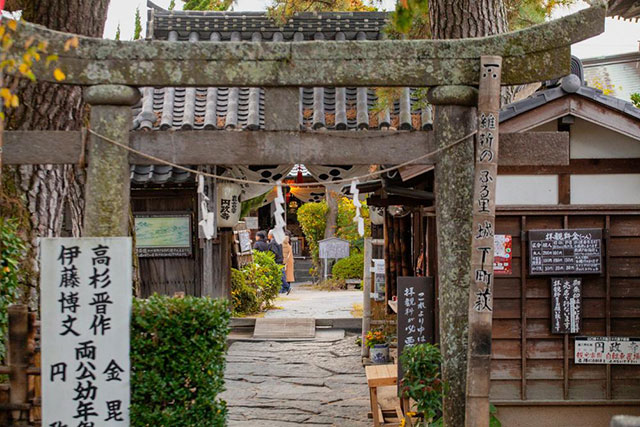
Kyoto may be synonymous with ‘old Japan’ for travelers, but that city by no means has the monopoly on must-see historical sites. Up and down the Japanese archipelago lay a multitude of smaller towns that superbly preserve the atmosphere and appearance of the pre-modern era. Many of these have each been dubbed ‘Little Kyoto’ and can substitute, at least partly, for a trip to the former Imperial capital itself. Our picks below though, we’d contend, are also well worth a visit for those with Kyoto already ticked off on their itinerary.
-
01
Kakunodate (Akita Prefecture)
![Kakunodate (Akita Prefecture)]()
Kakunodate (Akita Prefecture)
Kakunodate, which in the present day is part of Akita’s Senboku district, developed in the early 17th century as a castle town with a sizable samurai population. Though only the ruins of the castle remain, the town’s winding, narrow streets contain a number of well-preserved samurai residences that convey the heady atmosphere of the days when this warrior class dominated Japanese society’s lesser ranks.
![Kakunodate (Akita Prefecture)]()
Kakunodate (Akita Prefecture)
The fact that many samurai were also cultured aesthetes, as well as feared warriors, is evident in the serene traditional garden of one standout samurai abode, that of the Ishiguro Clan. Family descendants inhabit the building to this day, with the current Ishiguro-san and his son always keen to give visitors a tour. Nestled between the samurai houses are a number of small museums, craft shops, and cafes. A rickshaw ride is a superb way to see Kakunodate, especially in spring when the cherry blossom trees that line the streets are in bloom.
![Kakunodate (Akita Prefecture)]()
Kakunodate (Akita Prefecture)
Access: Around three hours from Tokyo Station
Ride the Akita Shinkansen to Kakunodate Station
Read more:
Discover Kakunodate's Historic Area- The Ishiguro Manor
-
-
- Akita Pref. Sembokushi Kakunodatemachiomotemachishimochou 1
-
-
-
- 0187551496
-
-
-
- [Apr.- Nov.]9:00-17:00[12-Ne…
-
View All -
02
Hida Furukawacho and Gujo Hachiman (Gifu Prefecture)
![Hida Furukawacho (Gifu Prefecture)]()
Hida Furukawacho (Gifu Prefecture)
The historic Gifu Prefecture city of Hida is best known for its distinctive gassho-zukuri (‘praying hands’) houses, but the area also boasts its own ‘Little Kyoto’ that shouldn’t be missed when visiting. Known as Hida Furukawacho, the town grew up around the Miyagawa River in the 16th century. Rows of traditional townhouses, many featuring charming cloud-pattern carvings which were the ‘branding’ of each local craftsman, are joined by two sake breweries and a handful of temples.
- 飛騨古川の町並み
-
-
- 岐阜県飛騨市古川町壱之町、三之町
-
-
-
- 0577732111
-
View All
![Gujo Hachiman (Gifu Prefecture)]()
Gujo Hachiman (Gifu Prefecture)
Another Gifu location that has something of a ‘Little Kyoto’ vibe is Gujo Hachiman. This again is a town with 16th century origins, and sits at the foot of the immaculately preserved castle of the same name. Here historic townhouses are clustered around the picturesque Yoshida River, while fish swim leisurely along backstreet streams.
![Gujo Hachiman (Gifu Prefecture)]()
Gujo Hachiman (Gifu Prefecture)
Access: Around two hours from Nagoya Station
From Gifu Station, ride the JR Takayama Main Line to Mino-Ota Station and from there continue along the Nagara River Railway to Gujō-Hachiman Station
Read more:
A hidden gem in Gifu: Gujo Hachiman Town- 郡上八幡の古い町並み
-
-
- 岐阜県郡上市八幡町柳町、八幡町職人町、八幡町鍛冶屋町
-
-
-
- 0575670002
-
View All
-
03
Tamba Sasayama (Hyogo Prefecture)
![Tamba Sasayama (Hyogo Prefecture)]()
Tamba Sasayama (Hyogo Prefecture)
Around one-hour from Osaka is the atmospheric town of Tamba Sasayama, which is renowned for its traditional pottery that’s been produced here for the last 800 years. Its Edo-style townscape features historic castle remains and a beautiful shrine, as well as the Aoyama Heritage Village where you can discover the history of Tamba Sasayama and the Aoyama clan. Soak up the natural scenery while cycling through the lush green fields of the Fukusumi area or rent a kimono to explore the town’s history-drenched buildings in style.
![Tamba Sasayama (Hyogo Prefecture)]()
Tamba Sasayama (Hyogo Prefecture)
Access: Around one hour from Shin-Osaka Station
Travel from Osaka Station to Sasayamaguchi Station on the JR Fukuchiyama Line
Read more:
What to Do in Sasayama -
04
Onomichi (Hiroshima Prefecture)
![Onomichi (Hiroshima Prefecture)]()
Onomichi (Hiroshima Prefecture)
Overlooking the Seto Inland Sea, Onomichi is a nostalgic port city that sprawls across a network of hilly streets. It’s renowned for its Temple Walk, a series of paths that connect 25 temples and is a popular way to discover the town’s rich history. Witness the painted screens and ornate pagoda of Jōdo-ji and visit the Literature Museum, then make a short detour to explore the Motion Picture Museum. You can ride the cable car to Mt. Senkōji to soak up the sweeping views across the port or browse the works by international artists that are displayed at the Onomichi City Museum of Art.
![Onomichi (Hiroshima Prefecture)]()
Onomichi (Hiroshima Prefecture)
Access: Around two hours from Shin-Osaka Station
From Shin-Osaka Station, take the JR Tokaido Shinkansen to Fukuyama Station and then take the JR Sanyo Main Line to Onomichi Station
Read more:
Where to Go in OnomichiRabbit Island and Cycling Experience in Hiroshima
¥14,900
Update date:2024/04/19
-
05
Tsuwano’s Tonomachi Street (Shimane Prefecture)
![Tsuwano’s Tonomachi Street (Shimane Prefecture)]()
Tsuwano’s Tonomachi Street (Shimane Prefecture)
Tsuwano in Shimane Prefecture is home to Tonomachi Street, an avenue that was once home to the senior-ranking samurai of the Tsuwano domain. Residences along the tree-lined street retain their original stately appearance, and are joined by a clear-watered canal containing around 20,000 colorful koi carp. At one corner of Tonomachi Street sits the former house of the Kamei family, who were chief retainers to the neighborhood samurai for eleven generations. This imposing structure is one of Japan’s officially designated Tangible Cultural Properties. June is regarded as the best month to visit, when the district’s abundance of irises come into spectacular full bloom.
![Tsuwano’s Tonomachi Street (Shimane Prefecture)]()
Tsuwano’s Tonomachi Street (Shimane Prefecture)
Access: Around one hour from Hagi-Iwami Airport
From Hagi-Iwami Airport, take a bus to Masuda Station, then ride the JR Yamaguchi Line to Tsuwano Station
Read more:
A Day Trip to Tsuwano![Tsuwano’s Tonomachi Street (Shimane Prefecture)]()
Tsuwano’s Tonomachi Street (Shimane Prefecture)
-
06
Hagi (Yamaguchi Prefecture)
![Hagi (Yamaguchi Prefecture)]()
Hagi (Yamaguchi Prefecture)
The Yamaguchi Prefecture town of Hagi thrived during the Edo period (1603-1867), when it was home to the formidable Mori Clan which played a major role in 1868’s Meiji Restoration (the return to the throne of the Japanese emperor). Hagi’s castle has since been reduced to mere ruins, but the downtown district’s former samurai mansions, as well as the workshops of the merchants who enjoyed some trickle-down wealth from the warrior class, are very much intact with the former retaining their original splendor. Several temples are also located in this quarter, along with a couple of small museums. A rickshaw tour makes a great way to zip around this history-steeped location.
![Hagi (Yamaguchi Prefecture)]()
Hagi (Yamaguchi Prefecture)
Access: Around one hour from Hagi-Iwami Airport
From Hagi-Iwami Airport, take a bus to Masuda Station, then ride the JR Yamaguchi Line to Tsuwano Station
Read more:
Where to Go in Hagi- Hagi Castle Ruins
-
-
- Yamaguchi Pref. Hagishi Horiuchi 1-1
-
-
-
- 0838253139
-
-
-
- [Apr.- Oct.]8:00-18:30[Nov.-…
-
View All


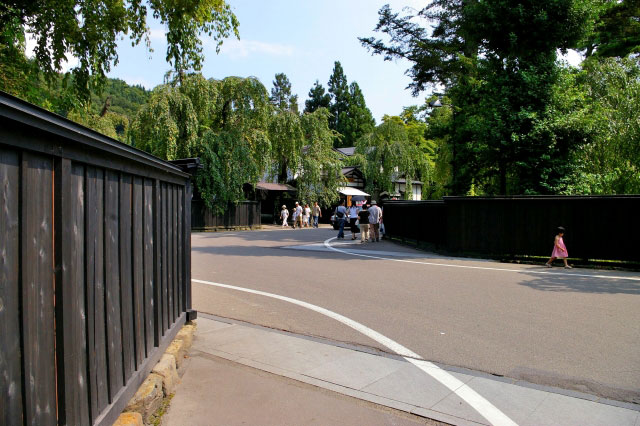

 Go here
Go here


